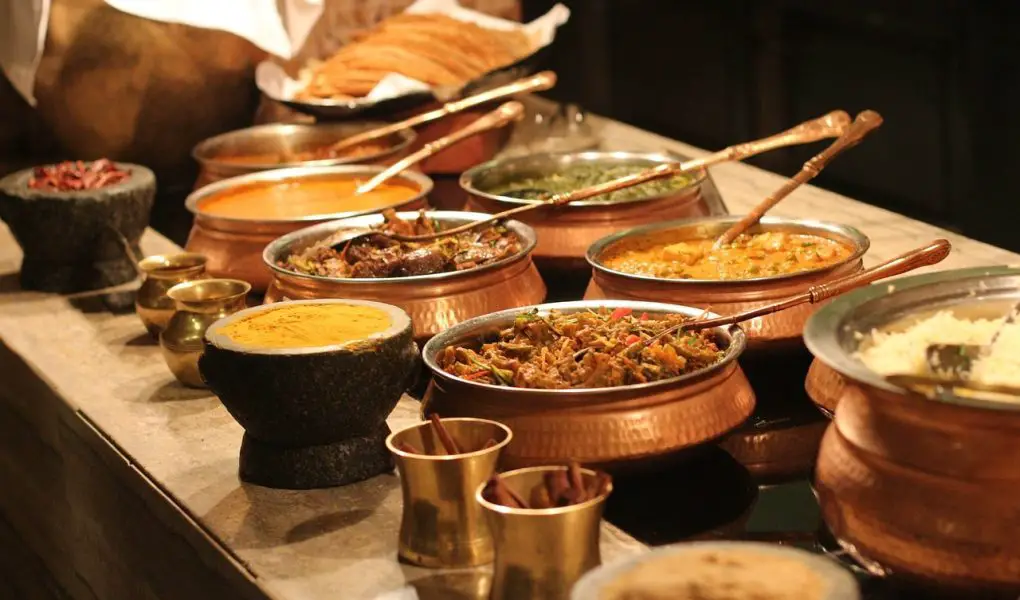The restaurant industry is one of the most competitive industries worldwide. It’s essential for restaurants to keep up with the ever-evolving technology trends to stay ahead of their competition.
Artificial Intelligence (AI) is proving to be a game-changer in the restaurant industry. From chatbots to predictive analytics, AI is helping restaurant owners streamline their operations, and offer personalized services to their customers.
In this blog post, we’ll explore how AI is affecting the restaurant industry.
Personalized Ordering Experience.
The personalized ordering experience is becoming increasingly important in the restaurant industry. Customers are looking for a more personalized experience, and AI is helping restaurants meet their expectations.
AI algorithms can analyze customer data, like order history, preferences, and location, to provide customized recommendations.
One way AI is providing a personalized ordering experience is through recommendation engines.
Recommendation engines use data analysis and machine learning algorithms to suggest items to customers based on their past orders or preferences.
These engines can analyze a customer’s order history, the time of day, and the weather conditions to make recommendations. For example, if a customer frequently orders pizza, the recommendation engine may suggest a new pizza topping that they haven’t tried before.
The Use of Chatbots.
Chatbots are also becoming more prevalent in the restaurant industry.
Chatbots can interact with customers through messaging apps or the restaurant’s website to help them place orders. Chatbots can also be programmed to answer frequently asked questions, provide information on menu items, and even suggest menu items based on a customer’s preferences.
For example, a customer can ask a chatbot for recommendations for a vegetarian pizza, and the chatbot can suggest a pizza with vegetables and no meat.
Moreover, AI-powered ordering systems can analyze customer data to provide a more efficient ordering experience.
These systems can save customers’ past orders, preferences, and payment information, making it easier and quicker for customers to place an order. For example, a customer who frequently orders a large pepperoni pizza can simply click a button to reorder the same pizza, rather than having to navigate through the menu and add the items manually.
You’re very likely using an AI powered tool to order food on a weekly basis.
5 Ways Chatbots Can Help Restaurants Boost Sales and Customer Satisfaction
Personalized Recommendations.
AI-powered personalized ordering experiences can also benefit restaurants by increasing customer loyalty and repeat business. By offering personalized recommendations and a more efficient ordering process, customers are more likely to return to the restaurant.
Additionally, AI-powered ordering systems can collect customer feedback and data on sales, which can help restaurants optimize their menus and offerings to better serve their customers.
Overall, AI is helping restaurants provide a more personalized ordering experience to their customers.
Through recommendation engines, chatbots, and efficient ordering systems, restaurants can analyze customer data to provide customized recommendations and improve the ordering process.
This personalized approach can increase customer loyalty and repeat business, ultimately leading to increased revenue and success for restaurants.
Improved Menu Management.
Improved menu management is one of the significant ways AI is affecting the restaurant industry. With the help of AI, restaurants can analyze sales data, customer feedback, and other metrics to optimize their menus continually.
This section will explore the ways in which AI is improving menu management in restaurants.
One of the significant advantages of AI-powered menu management is the ability to analyze sales data to identify the most popular menu items, the items that generate the most revenue, and those that have the highest profit margins.
Restaurants can use this information to modify their menus, remove underperforming items, and add new items that align with customer preferences.
By using AI-powered analytics, restaurants can make data-driven decisions about their menu items, which can lead to increased profitability.
AI-powered menu management systems can also automate inventory management, ensuring that restaurants are always stocked with the necessary ingredients. The system can predict the demand for specific ingredients, which enables restaurants to order in advance and avoid stock outs.
By automating inventory management, restaurants can reduce the waste of perishable items and ensure that they always have the necessary ingredients to prepare menu items. This can lead to significant cost savings for the restaurant.
Analyze Customer Feedback.
Moreover, AI can analyze customer feedback and reviews to identify areas for improvement. For example, if customers consistently complain about the wait time for a particular menu item, the restaurant can use this information to optimize its preparation process.
By making improvements based on customer feedback, restaurants can improve their overall customer experience and increase customer loyalty.
AI can also analyze external factors such as weather conditions, seasonal trends, and holidays to make menu recommendations.
For example, during the winter season, the system may recommend more hearty dishes such as soups and stews. During the summer, it can suggest lighter foods like salads and sandwiches.
By adjusting their menus based on external factors, restaurants can better serve their customers and optimize their profitability.
In addition to the benefits mentioned above, AI-powered menu management systems can also help restaurants reduce food waste.
By analyzing sales data, the system can predict the demand for specific menu items, which can help the restaurant avoid overproduction.
This can help reduce food waste, which is not only beneficial for the environment but can also lead to significant cost savings for the restaurant.
AI-powered menu management is transforming the restaurant industry by providing restaurants with the tools to optimize their menus continually.
By analyzing sales data, customer feedback, and external factors, restaurants can make data-driven decisions about their menu offerings.
Additionally, AI-powered menu management can help restaurants reduce waste, improve their profitability, and provide a better overall customer experience.
As AI continues to evolve, we can expect to see more innovative solutions that will revolutionize the way restaurants manage their menus.
Why Every Restaurant Needs a Chatbot: The Benefits and How to Implement Them
Enhanced Kitchen Operations.
The restaurant industry is known for its fast-paced and hectic environment, where every second counts.
Therefore, optimizing kitchen operations is vital to ensure that the kitchen is running efficiently, and orders are prepared and served in a timely and consistent manner.
AI-powered solutions are making a significant impact on kitchen operations by automating processes, reducing waste, and increasing productivity.
One of the ways AI is enhancing kitchen operations is through the use of automated inventory management systems. These systems use AI algorithms to analyze data such as sales history, menu items, and seasonal trends to predict ingredient demand.
By automating inventory management, restaurants can reduce food waste, ensure that they have the necessary ingredients on hand, and avoid costly stock outs.
AI-powered kitchen operations can also streamline the preparation process by automating certain tasks such as food preparation, cooking, and plating.
For example, an AI-powered kitchen can use computer vision to identify the ingredients in a dish and automate the preparation process.
This can significantly reduce the time and effort required to prepare each dish and increase productivity in the kitchen.
Cooking Optimization.
In addition, AI can help restaurants optimize their cooking times and temperature settings. By analyzing data such as the size of the dish, the type of oven, and the cooking time, AI-powered systems can adjust the temperature and cooking time settings automatically to ensure that dishes are cooked to perfection every time.
This can help reduce food waste, improve consistency, and increase customer satisfaction.
Additionally, AI-powered kitchen operations can help restaurants identify inefficiencies in their workflows and make improvements.
For example, by analyzing the time it takes for each dish to be prepared and served, restaurants can identify bottlenecks in the kitchen and make changes to improve their workflow.
This can help reduce wait times for customers and increase the number of orders the kitchen can handle.
AI-powered kitchen operations can also improve food safety by automating certain tasks such as temperature monitoring and hygiene checks.
For example, AI-powered sensors can monitor the temperature of food as it is being prepared and alert kitchen staff if it falls outside of safe levels. This can help reduce the risk of food borne illness, and ensure that food is safe to consume.
AI is revolutionizing kitchen operations in the restaurant industry by automating processes, reducing waste, and increasing productivity.
By using AI-powered inventory management systems, automating food preparation tasks, optimizing cooking times and temperature settings, identifying inefficiencies in workflows, and improving food safety, restaurants can provide a better overall customer experience.
As AI continues to evolve, we can expect to see more innovative solutions that will further enhance kitchen operations and transform the restaurant industry.
Predictive Analytics for Improved Decision Making
AI is also helping restaurant owners make informed decisions. Predictive analytics algorithms can analyze customer data, sales trends, and other metrics to provide insights on future sales, demand for specific menu items, and the impact of external factors such as weather conditions. This information allows restaurant owners to make data-driven decisions on menu items, promotions, and pricing.
Moreover, AI-powered analytics can help restaurant owners optimize their staffing schedules. The system can analyze historical sales data and predict future sales, which enables restaurant owners to schedule their staff accordingly. This reduces labor costs and ensures that the restaurant is appropriately staffed during peak hours.
Conclusion.
AI is transforming the restaurant industry by improving efficiency, enhancing customer experience, and providing insights for informed decision-making.
As AI continues to evolve, we can expect to see more innovative solutions that will revolutionize the way restaurants operate.
Restaurant owners who embrace AI and implement it in their operations will have a competitive advantage over their competitors and provide their customers with a personalized and efficient dining experience.





